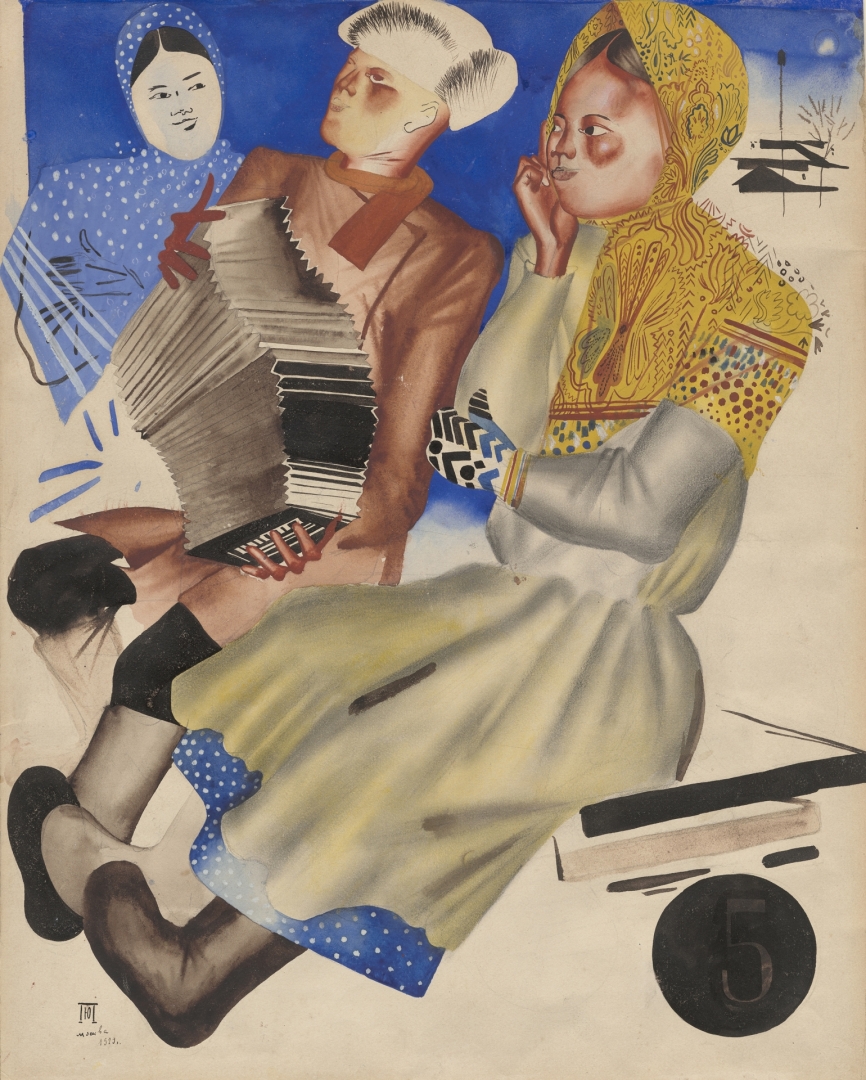Yakov Rubinstein (b. 1900 in Warsaw – d. 1983 in Moscow) was one of the earliest Soviet art collectors, who started collecting in the years of Stalin’s oppressive rule and set the direction for more widespread art collecting in the 1960s. Rubinstein’s collection was created over 25 years. It was among the most outstanding private collections focusing on the Russian art of the first three decades of the 20th century. An important part of the collection features numerous sketches for stage set and costume designs. The most personal part of the collection contains graphic portraits of the outstanding figures of the art scene of Rubinstein’s time, reflecting the collector’s circle of friends and acquaintances and his sphere of interests.

Yakov Rubinstein (b. 1900 in Warsaw – d. 1983 in Moscow) was one of the earliest Soviet art collectors, who started collecting in the years of Stalin’s oppressive rule and set the direction for more widespread art collecting in the 1960s. Rubinstein’s collection was created over 25 years. It was among the most outstanding private collections focusing on the Russian art of the first three decades of the 20th century.
While the part of the collection that remains in the possession of Rubinstein’s family is relatively small, it gives an impression of the collection as it once was. The collection is noteworthy for reflecting the diversity in early 20th-century Russian art and for preserving traces of the various manifestations of art created under the totalitarian regime. Many artists whose work is represented in the collection had to sacrifice their freedom or even their lives for their art.
An important part of the collection features numerous sketches for stage set and costume designs. The most personal part of the collection contains graphic portraits of the outstanding figures of the art scene of Rubinstein’s time, reflecting the collector’s circle of friends and acquaintances and his sphere of interests.
Yakov Rubinstein had relatives in Estonia, and he often spent his summer holidays at the Estonian seaside in Käsmu or Pärnu with his family. The first exhibition of his collection was held at the Art Museum of Estonia in 1966. Tallinn was also one of the venues for the touring exhibition in 1978.
The exhibition at the Mikkel Museum shows the part of Rubinstein’s collection inherited by Yakov Rubinstein’s granddaughter Tanya Rubinstein-Horowitz. She also inherited his love for art, and continues her grandfather’s work in maintaining, researching and exhibiting the collection, which she has expanded with new additions, upholding her grandfather’s collecting principles.
The exhibition is organised in collaboration with Tanya Rubinstein-Horowitz.
Curator: Olga Sugrobova-Roth
Coordinator: Aleksandra Murre
Exhibition design: Inga Heamägi
Graphic design: Külli Kaats
Galerii nimi: Mikkel museum
Address: A. Weizenbergi 28, Tallinn, Estonia
Opening hours: Tue 10:00 - 18:00 Wed 10:00 - 20:00 Thu-Sun 10:00 - 18:00
Open: 01.10.2022 — 30.04.2023
Address: A. Weizenbergi 28, Tallinn, Estonia
Opening hours: Tue 10:00 - 18:00 Wed 10:00 - 20:00 Thu-Sun 10:00 - 18:00
Open: 01.10.2022 — 30.04.2023